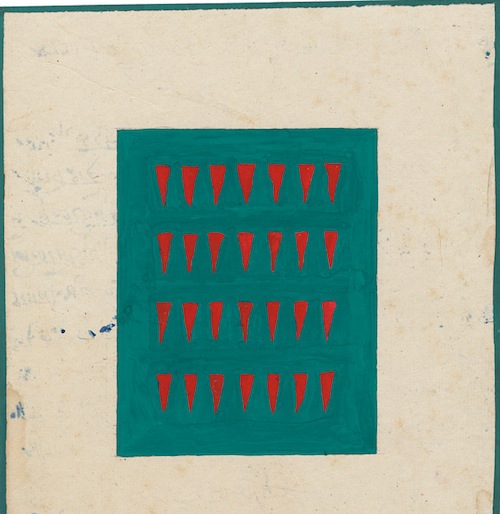A poet's fascination with the 17th century tantra paintings of India
French poet Franck Andre Jamme first came across the bold, concise paintings created by 17th c. Hindu tantra devotees when he was rummaging through old catalogs in a Parisian art gallery in 1970. Struck by their similarity to the images of modernist artists like Paul Klee (whom these tantric artists predated by hundreds of years), Jamme decided to go to Rajasthan to learn more about the tradition's origins.
Twenty-five years (and many trials) later, Jamme has finally published a book about the history of the paintings and their connection to modernist art and poetry. From a recent post in the New York Times' design blog:
In 1985, Jamme was on a bus to Jaipur when his driver fell asleep and smashed into an oncoming truck, killing seven people. Jamme suffered a series of comas but eventually returned to India. After consulting a soothsayer, he resumed his quest to befriend tantrikas and understand their meditative art form, which originated in handwritten religious texts but is today mostly neglected on the subcontinent. “I needed around 20 years to find the good nests, the good families where people were still making these marvels,” Jamme said.
Jamme has also reflected on the paintings' connection to poetry, as in this post at Brain Pickings:
It was strange that such modern, occidental-looking patterns already existed in India during the 17th century, and they were so simple, so powerful, so quietly and naturally abstract, so near, as well, to my own field, which was already something like poetry. Poetry is so often like that, isn’t it? Playing with words, using words in such a natural abstract way.
Learn more about Jamme's book Tantra Song and see more of the images here.



